Today was the second day in Hawaii, and it definitely was jam packed!
I started off by waking up bright and early at 5:50 in the morning! I walked down to the beach and watched the last part of the sunset, just to see the sun peeking up and a small rainbow forming. Afterwards, I grabbed the snorkel gear and swam around for a while! Although the coral isn’t the brightest, the bright yellow and striped fish definitely made up for it.

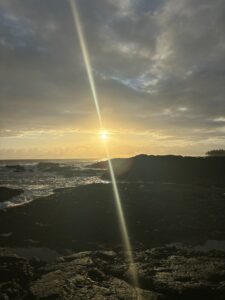
We eventually made our way back to our Airbnb (which is pretty awesome by the way), and we made some breakfast, hopped in the car, and went to our first stop of the day: Kilauea Iki Lava Lake! We took a decently long hike down to the bottom of the dried up lava lake, listening to Professor Knapps debriefs of around 12 stops. At the bottom, we had the privilege of looking at the lava rock below, and learning about how during the eruption, this lava lake spewed incredibly high in the air, way above the highest landmark in the area, around 580m! The eruption in 1959 was incredibly huge. For scale, 580m tall is as tall as the World Trade Center was. The most recent eruption was not as large, and was in 2018, but the left over water in 2019 proved to be a large concern, as the water increased the possibility for a more explosive eruption.
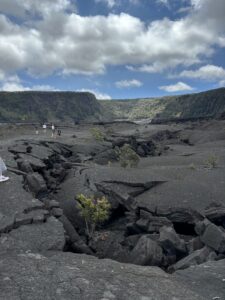
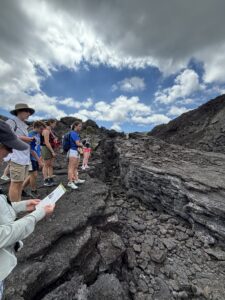

Many natives believe that the volcanic deity, Pele, made this her most spectacular display. The Kilauea calder is known to be the home of this volcano goddess.
Something that was quite interesting was the variety of rock textures below. Although it was all mostly lava rock, due to weathering, and the lava lake drying, there were many different textures present. Weathering from acidic rain (mainly sulfuric acid), rain and wind, and people, caused some of the rock to break up into sand appearing parts. Picking up the sandy parts, one would find tiny rocks, with a texture differing that of a normal beach. Additionally, when looking at the main fissure in the ground, the thickness of the lava rock became quite prevalent to us. When looking at the below pictures, it looks just rocky. But moving across, you can see the true thickness of this rock.
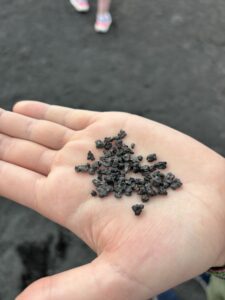
After this, we made our way back up out of the lava lake, and made our way to the Thurston Lava Tube, which was incredible, and very dark as you can see below! Lava tubes are general passageways that lava travels through, usually under a lava flow. Some are small, like the one Lucy is pointing to in the lava lake, while others are huge! When lava empties from them though, they leave a huge cave! The cave today was pretty dark and moist. After this, we spent some time looking at the caldera of Kilauea, seeing the steam still rising from the floor of it.
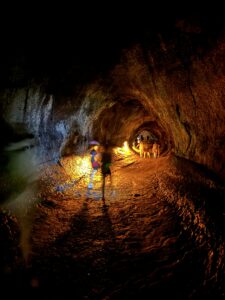
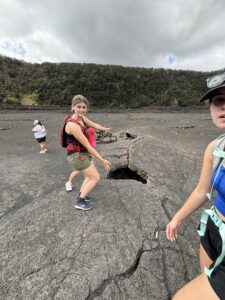
We then left and checked out the volcanos museum and gift store, as well as the art. It is really interesting to look at how prevalent Hawaiian culture is within their art. It is breathtaking.
After this, we took our last volcanic trip of the day to the sulfur banks. When the summit of Kilauea collapsed due to the loss of magma, the caldera was formed. The volcanic gasses under the caldera, ranging from sulfur to other gasses, are then released as steam! The yellow color in the image below is also from the sulfur.

Going back to the AirBnB in Hilo, we stopped at our first natural stream, and took a peak at what it feeds into: the rainbow waterfall! This was breathtaking, as well as the tree that surrounded it! As seen below, its roots and branches branch everywhere!
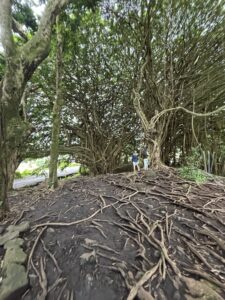
Getting home, we took another snorkeling trip (as seen below), found some more sea turtles, started on our spaghetti dinner, watched some Teen Beach Movie, and called it a night.
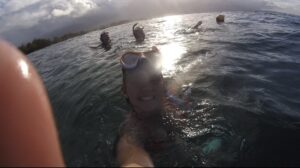
Another our next adventures tomorrow! Stay tuned!